Definition
noun, plural: tropocollagens
A single collagen molecule; a molecular structure that makes up a collagen fiber, and is comprised of three polypeptide chains coiled around each other
Supplement
Tropocollagen is the structural unit of a collagen fiber. It is made up of three polypeptide strands (referred to as alpha peptides) that are twisted together into a super helix or a right-handed triple helix. The amino acids in each chain are arranged in a regular pattern. The typical pattern is Gly-Pro-X or Gly-X-Hyp (the X being any other amino acid residue). An aggregate of tropocollagen is referred to as a fibril.
The synthesis of tropocollagen begins at mRNA transcription of genes that usually have the “COL” prefix. The final mRNA transcript leaves the nucleus and then binds with the ribosomes to begin translation, resulting in the formation of pre-pro-peptide. The pre-pro-peptide moves to the endoplasmic reticulum for post-translational modification. The first modification is the dissolution of the signal peptide on the N-terminal of the pre-pro-peptide, thereby, becoming a propeptide. The propeptide next undergoes lysine and proline hydroxylations through the action of vitamin C (as a cofactor) and enzymes, prolyl hydroxylase and lysyl hydroxylase. This is, then, followed by glycosylation where monosaccharide (glucose or galactose) monomers are added onto the hydroxyl groups of lysines. This leads to the formation of a triple helix structure, now called procollagen, but still with unwound or loose ends. The procollagen is packaged into a transfer vesicle to be transferred to the Golgi apparatus for further post-translational modification. In the Golgi apparatus, oligosaccharides are added to the procollagen and then packaged into a secretory vesicle to be transferred outside the cell. Once outside, the collagen peptidases “trim” the loose ends of the procollagen to become tropocollagen. The enzyme lysyl oxidase aid in the binding of tropocollagen molecules to form an aggregate called collagen fibril.
See also:
Dictionary > Tropocollagen
You will also like...
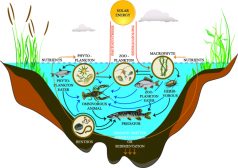
Freshwater Producers and Consumers
Freshwater ecosystem is comprised of four major constituents, namely elements and compounds, plants, consumers, and deco..
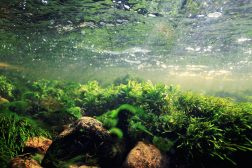
Lotic Communities & Algae
Lotic communities have conditions that are rather harsh for typical plants. Thus, the diversity of plant species in loti..
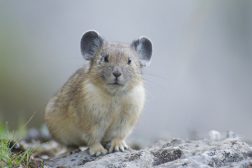
Indicator Species and Endangered Species
Certain species are capable of expressing characteristics indicative of the state of the ecosystem they occupy. They are..

Animal Water Regulation
Animals adapt to their environment in aspects of anatomy, physiology, and behavior. This tutorial will help you understa..
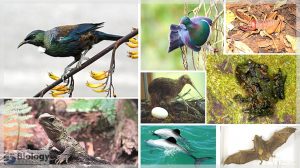
New Zealand’s Unique Fauna
Meet some of New Zealand's unique fauna, including endemic insects, frogs, reptiles, birds, and mammals, and investigate..
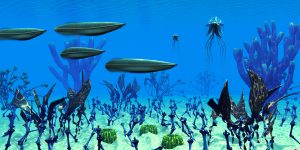
Arthropods
The arthropods were assumed to be the first taxon of species to possess jointed limbs and exoskeleton, exhibit more adva..

